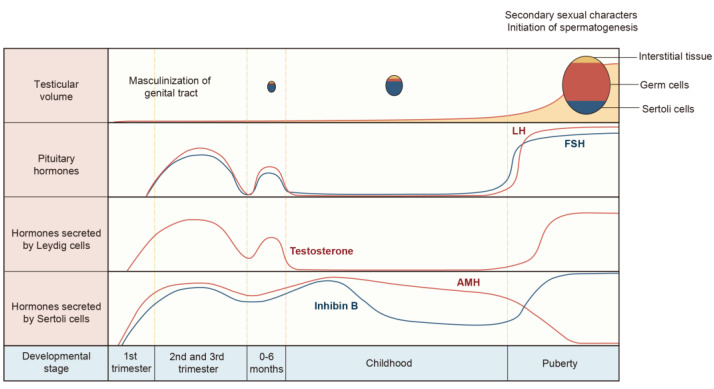Figure 4.
Developmental physiology of the testis and serum levels of gonadotropins, testosterone, inhibin B, and AMH from the fetal stage to puberty. The activation of the male HPG axis occurs in three distinct waves. The first wave commences during the fetal period, where testosterone expression prompts the differentiation of internal genitalia and the masculinization of the external genitalia. Additionally, AMH facilitates the regression of Müllerian ducts. This process reaches its peak in mid-pregnancy and decreases at birth. Following birth, there is a brief reactivation of the HPG axis during minipuberty. This second wave is characterized by an increased secretion of LH and FSH, leading to a testosterone peak comparable to that of puberty. Subsequently, during infancy and childhood, levels of gonadotropins and testosterone decrease, whereas levels of AMH and inhibin B continue to rise. Testicular volume experiences a slight increase during fetal and childhood stages, primarily due to the proliferation of Sertoli cells. It is not until puberty that the HPG axis is reactivated. During puberty, testosterone stimulates Sertoli cell maturation and initiates spermatogenesis, accompanied by a significant increase in testicular volume. Concurrently, testosterone inhibits AMH levels, and FSH stimulation elevates inhibin B levels.

